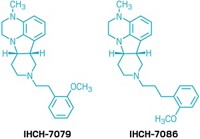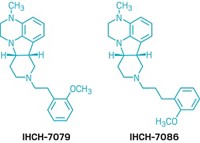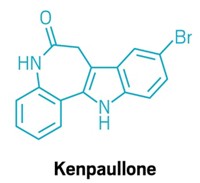Advertisement
Grab your lab coat. Let's get started
Welcome!
Welcome!
Create an account below to get 6 C&EN articles per month, receive newsletters and more - all free.
It seems this is your first time logging in online. Please enter the following information to continue.
As an ACS member you automatically get access to this site. All we need is few more details to create your reading experience.
Not you? Sign in with a different account.
Not you? Sign in with a different account.
ERROR 1
ERROR 1
ERROR 2
ERROR 2
ERROR 2
ERROR 2
ERROR 2
Password and Confirm password must match.
If you have an ACS member number, please enter it here so we can link this account to your membership. (optional)
ERROR 2
ACS values your privacy. By submitting your information, you are gaining access to C&EN and subscribing to our weekly newsletter. We use the information you provide to make your reading experience better, and we will never sell your data to third party members.
Drug Discovery
Small molecules shield mice against hearing loss
Using multitiered screen, scientists find potent compounds that fend off hearing loss induced by common cancer drug cisplatin
by Tien Nguyen
March 26, 2018
| A version of this story appeared in
Volume 96, Issue 13
The cancer drug cisplatin, though lifesaving, comes with serious side effects. One of the most common is hearing loss, which affects more than 60% of people treated with cisplatin, and for which researchers have struggled to develop FDA-approved therapies. At the meeting, researchers led by Jian Zuo at St. Jude Children’s Research Hospital described a way to find compounds that protect against cisplatin-induced hearing loss (J. Exp. Med. 2018, DOI: 10.1084/jem.20172246). The team screened more than 4,000 compounds for their ability to protect cochlear cells that had been treated with cisplatin. Among their most potent hits was the molecule kenpaullone, which was able to protect the hearing of rodents and the auditory-like organ of zebrafish from damage. Kenpaullone inhibits an enzyme called cyclin-dependent kinase 2 (CDK2), which the researchers hypothesized may be a promising target for cisplatin-induced hearing loss. They confirmed their hunch by demonstrating that mice lacking CDK2 were better able to hold on to hearing after cisplatin treatment. The researchers then evaluated known CDK2 inhibitors against cisplatin-treated cells and ultimately found two compounds, AT7519 and AZD5438, that had even better protective properties than kenpaullone. Alan Cheng of Stanford University called the work “elegant” and said the newly identified target may hold promise for other forms of cochlear damage as well.





Join the conversation
Contact the reporter
Submit a Letter to the Editor for publication
Engage with us on Twitter